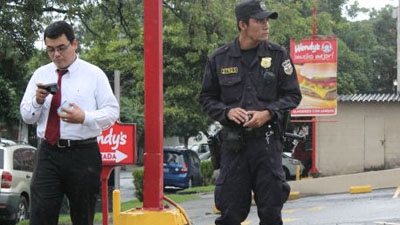It has been said that not all booms are positive. Latin America faces the apparent paradox of experiencing an economic boom at the same time as a rising crime wave, which has made it one of the most dangerous regions in the world.
Although the homicide rate dropped by 50 percent in the 2000s worldwide, it rose in our region. Curiously, during that same period, most Latin American countries experienced robust economic growth and significant poverty reduction, in addition to other social advances.
Is it wrong, then, to assume that better economic conditions result in less crime?
A group of World Bank researchers decided to find out. Armed with a battery of data and statistical tools, they analyzed more than 2,000 municipalities in Mexico. They found that this premise was correct and that localities with less inequality do in fact have lower crime rates.
In this interview, economist Hernan Winkler, one of the study’s authors, discusses the relationship between inequality and violence and the most effective economic strategies for combating rising crime in the region.
Question: There is talk of drug trafficking, pockets of poverty…should we be talking about inequality to explain the crime wave in Latin America?
Response: We cannot attribute the growing number of homicides in the region to a single cause. Inequality is important but it is not the only factor. Crime and violence increased in Latin America at the same time inequality declined, which suggests that there are other, more determinant factors at play. Our research in Mexico indicates that a more equitable income distribution has contributed to mitigating violence at the municipal level. In other words, social inequality at the local level can help explain why some municipalities suffer the impact of drug trafficking more than others.
Q: So what is the relationship between violence and social inequality?
R: On the one hand, some theories suggest that inequality generates a sense of injustice among disadvantaged people, which leads them to seek compensation by other means, including criminal activity. On the other hand, crime can be explained by a cost-benefit analysis: when the poorest citizens have few economic opportunities and there are greater income gaps between rich and poor, the economic benefits of crimes such as robberies or kidnappings – which often end in homicide – tend to be greater. Interestingly, we found that inequality led to increased crime even when we compared municipalities with similar poverty trends. In other words, an increase in inequality resulting from the rich getting richer (rather than a growing percentage of poor people) contributed to increasing homicide rates in some municipalities in Mexico.
Q: Considering the high levels of inequality in Latin America, is there reason to believe that crime and violence will increase in the region in the future?
R: As I mentioned, the crime wave in Latin America has been accompanied by an unprecedented reduction in inequality rates since 2000. In this context, our results would suggest that the rise in violence might have been even greater if inequality had not declined in the region. Crime trends in the region will depend not only on socioeconomic conditions of Latin Americans, but also on factors such as the effectiveness of strategies to combat drug trafficking and to prevent the recruiting of young people for illegal activities, for example.
Q: What strategies could help reduce violence in the region?
R: First, it is important for governments to strengthen the achievements made over the past decade in terms of reducing poverty, inequality and unemployment. To this end, it is essential to continue to promote economic growth and the implementation of social policies to support the most vulnerable households. Efforts should be made to keep young people in the labor market and reduce school dropout rates in some countries to lower the risk that adolescents will become involved in criminal activity. It is also useful to learn from the experience of developed countries. While the single most important factor to explain the drop in crime has yet to be identified, the use of new technologies by security forces seems to have significantly reduced violence in some large cities. Finally, there are examples of successful programs in Brazil and Colombia, where increased coordination and cooperation between the police and residents of dangerous neighborhoods have contributed to sharply reducing crime.

